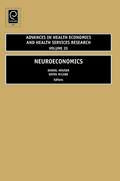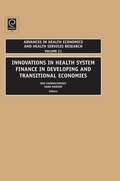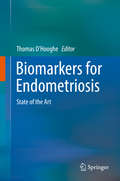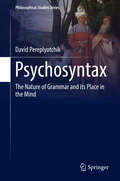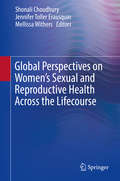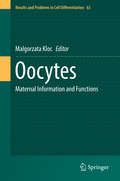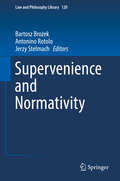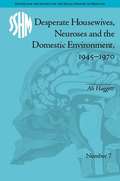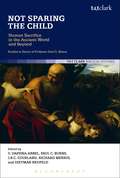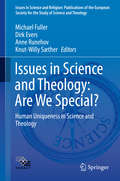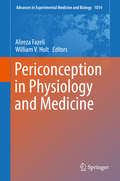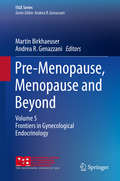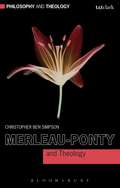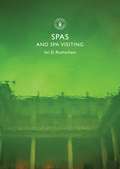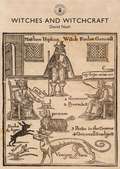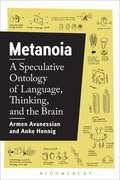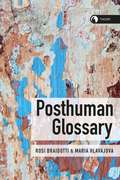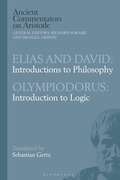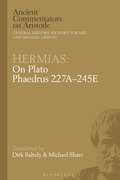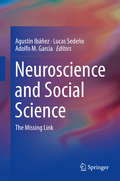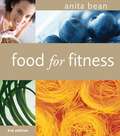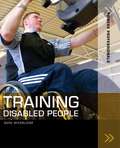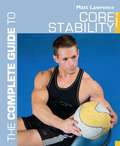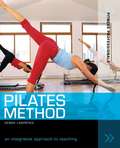- Table View
- List View
Neuroeconomics (Advances in Health Economics & Health Services Research #20)
by Daniel Houser Kevin McCabeThe purpose of the series "Advances in Health Economics and Health Services Research" is to consider all topics in health economics and the related field of health services research. Each volume is devoted to a specific topic. Most volumes consist of between ten and twelve papers, but a few may take the form of monographs by one or more authors. All areas in the field are covered including the production of and demand for health; the demand for medical care services; the financing of these services; the markets for physicians, nurses, dentists, hospitals, and drugs; the economics of substance use; health in developing countries; and, the economics of medical technology. The series is a forum for theoretical and empirical research. The latter employ data both for developing and developed countries. While most studies focus on economic issues, contributions from other social scientists are welcomed.
Innovations in Health Care Financing in Low and Middle Income Countries (Advances in Health Economics & Health Services Research #21)
by Kara Hanson Dov ChernichovskyLow- and middle-income countries face major challenges to their health systems. These include a high burden of communicable disease and an emerging non-communicable disease burden. Coverage of effective services and interventions is inadequate and often constrained by funding availability. At the same time, the international financing environment is changing rapidly, with new funding streams becoming available in part as a response to the challenges of meeting the Millennium Development Goals. These countries have taken a diversity of approaches to health care financing policies and programs to face the old and emerging challenges. This is increasingly accompanied by conceptual and applied research which is contributing to our understanding of how different financing mechanisms can contribute to the overall objectives of a health care system. The goal of this volume is to assemble the best of this research and synthesize 'best practices' for the benefit of researchers, policy makers and high level administrators, dealing with all elements of health care financing and focusing on both middle- and low-income settings, to represent the experiences of all regions of the developing world.
Biomarkers for Endometriosis: State of the Art
by Thomas D'HoogheThis book presents an overview of the diagnostic performance of non- or semi-invasive tests for endometriosis in peripheral blood, endometrium, saliva, peritoneal fluid and urine. The value of existing and emerging systems biology technologies for biomarker development is addressed in several chapters on genetics, microarrays, proteomics and metabolomics. Although tests with high sensitivity and acceptable specificity have been developed, sometimes validated in independent populations and seem promising, more research is needed to translate these data into clinical benefit for patients and coordinate efforts internationally to standarize analysis, reports and operating procedures. The gold standard to diagnose endometriosis is currently through laparoscopic inspection with histological confirmation, a surgical procedure with rare but significant potential risks for the patients. A non-invasive test for endometriosis would be critical for the early detection of endometriosis of symptomatic women with pelvic pain and/or subfertility with normal ultrasound. This would include nearly all cases of minimal-mild endometriosis, some cases of moderate-severe endometriosis without a clearly visible ovarian endometrioma and cases with pelvic adhesions and/or other pelvic pathology, who might benefit from surgery to improve pelvic pain and/or subfertility. Such a test would also be useful in symptomatic women with ultrasound imaging suspicious for endometriosis, since it may be difficult to differentiate an ovarian endometrioma from other ovarian cysts and since the quality of ultrasound imaging is highly variable worldwide.
Psychosyntax: The Nature of Grammar and its Place in the Mind (Philosophical Studies Series #129)
by David PereplyotchikThis volume examines two main questions: What is linguistics about? And how do the results of linguistic theorizing bear on inquiry in related fields, particularly in psychology? The book develops views that depart from received wisdom in both philosophy and linguistics. With regard to questions concerning the subject matter, methodological goals, and ontological commitments of formal syntactic theorizing, it argues that the cognitive conception adopted by most linguists and philosophers is not the only acceptable view, and that the arguments in its favor collapse under scrutiny. Nevertheless, as the book shows, a detailed examination of the relevant psycholinguistic results and computational models does support the claim that the theoretical constructs of formal linguistics are operative in real-time language comprehension. These constructs fall into two categories: mental phrase markers and mental syntactic principles. Both are indeed psychologically real, but in importantly different ways. The book concludes by drawing attention to the importance of the often-elided distinction between personal and subpersonal psychological states and processes, as well as the logical character of dispositional and occurrent states. By clarifying these concepts, particularly by reference to up-and-running psychological and computational models, the book yields a richer and more satisfying perspective on the psychological reality of language.
Chinese Medicine: The Web That Has No Weaver (PDF)
by Ted J. KaptchukIn the ancient tradition of Chinese medicine, illness is a disharmony of the whole body. The aim is to restore harmony through herbal medicine, acupuncture, moxibustion and the diagnostic skills of the physician. The governing principle is to balance Yin and Yang and to restore the interconnections between all aspects of the organism. This remarkable book explains the theory and practice of Chinese medicine. More than that, it mixes the most up-to-date knowledge of the oriental approach to healing with cutting-edge scientific research. 'While the book's rich detail makes it of great use to practising healers, it is in its entirety very simply written, enjoyable reading for the layman... An instructive, profound and important work.' Professor Martin Schwartz, University of California, Berkeley.
Global Perspectives on Women's Sexual and Reproductive Health Across the Lifecourse
by Shonali Choudhury Jennifer Toller Erausquin Mellissa WithersThis expansive survey spotlights pervasive issues affecting girls’ and women’s sexual and reproductive health across the lifecourse. Research from diverse countries around the world analyzes the complex relationships among biological, psychological, sociocultural, and economic issues—particularly in terms of inequities—as they shape women’s lives. Major challenges and possibilities for intervention are examined in their national context and with their global implications, including child marriage/motherhood, reproductive care and access, fertility, childbearing, contraception, abortion, HIV/STIs, gender-based violence, sexual pleasure, and menopause. In these forceful dispatches, a consistent human rights perspective emphasizes women’s control, autonomy, and agency in all stages of their lives. A sampling of topics covered:Girl child marriage: a persistent global women’s health and human rights violationInvestigating challenges and resilience among women living with obstetric fistula in KenyaA qualitative exploration of mainstream and social media reflections on abortionA continuum of severity of sexual intimate partner violence among black women in the United StatesEconomic empowerment to improve sexual and reproductive health among women and girlsSummarizing an interdisciplinary field on research and practical levels, Global Perspectives on Women's Sexual and Reproductive Health Across the Lifecourse will be an invaluable text for undergraduate and graduate courses in a wide range of fields, including public health, global health, women’s studies, sociology, anthropology, gender studies, and human rights.
Oocytes: Maternal Information and Functions (Results and Problems in Cell Differentiation #63)
by Malgorzata KlocThis book combines the most recent knowledge on the maternal, i.e. oocyte/egg-specific, molecules and processes. The volume covers the most recent advances in a plethora of subjects such as: maternal transfer of immunity, localized RNAs functions and mechanisms of RNA localization, transcriptional repression of maternal messages, maternal inheritance and maternal role of CRISPR/Cas9-based genome editing, chromatin remodeling and epigenetic modifications, maternal function of nucleosomes, maternal mitochondria and energy supply, role of bacterial symbionts and their maternal transmission, acquisition of oocyte polarity and evolution of maternal effect genes, germ plasm and oosome origin and functions, mechanisms of oocyte activation and soma germ cells communication. Currently, no other book on the market combines such a comprehensive list of subjects in one volume. Moreover, the information provided is a cross-section through oocytes from various invertebrate and vertebrate species, which is another unique feature of this book. The readers, therefore, get a completely new and invaluable perspective on all covered subjects.
Supervenience and Normativity (Law and Philosophy Library #120)
by Bartosz Brożek Antonino Rotolo Jerzy StelmachThe present collection represents an attempt to bring together several contributions to the ongoing debate pertaining to supervenience of the normative in law and morals and strives to be the first work that addresses the topic comprehensively. It addresses the controversies surrounding the idea of normative supervenience and the philosophical conceptions they generated, deserve a recapitulation, as well as a new impulse for further development.Recently, there has been renewed interest in the concepts of normativity and supervenience. The research on normativity – a term introduced to the philosophical jargon by Edmund Husserl almost one hundred years ago – gained impetus in the 1990s through the works of such philosophers as Robert Audi, Christine Korsgaard, Robert Brandom, Paul Boghossian or Joseph Raz. The problem of the nature and sources of normativity has been investigated not only in morals and in relation to language, but also in other domains, e.g. in law or in the context of the theories of rationality. Supervenience, understood as a special kind of relation between properties and weaker than entailment, has become analytic philosophers’ favorite formal tool since 1980s. It features in the theories pertaining to mental properties, but also in aesthetics or the law. In recent years, the ‘marriage’ of normativity and supervenience has become an object of many philosophical theories as well as heated debates. It seems that the conceptual apparatus of the supervenience theory makes it possible to state precisely some claims pertaining to normativity, as well as illuminate the problems surrounding it.
Desperate Housewives, Neuroses And The Domestic Environment, 1945-1970 (Studies For The Social History Of Medicine Ser. (PDF) #7)
by Ali HaggettAlthough the figure of the ‘desperate housewife’ is familiar to us, Haggett suggests that many women in the 1950s and ’60s led satisfying lives and that gender roles, while very different, were often seen as equal.
Not Sparing the Child: Studies In Honor Of Professor Paul G. Mosca
by Daphna Arbel Paul C. Burns J.R.C. Cousland Richard Menkis Dietmar NeufeldThe role of human sacrifice in the ancient Mediterranean world and its implications continue to be topics that fire the popular imagination and engender scholarly discussion and controversy. This volume provides balanced and judicious treatments of the various facets of these topics from a cross-disciplinary and cross-cultural perspective. It provides nuanced examinations of ancient ritual, exploring the various meanings that human sacrifice held for antiquity, and examines its varied repercussions up into the modern world. The book explores evidence to shed new light on the origins of the rite, to whom these sacrifices were offered, and by whom they were performed. It presents fresh insights into the social and religious meanings of this practice in its varied biblical landscape and ancient contexts, and demonstrates how human sacrifice has captured the imagination of later writers who have employed it in diverse cultural and theological discourses to convey their own views and ideologies. It provides valuable perspectives for understanding key cultural, theological and ideological dimensions, such as the sacrifice of Christ, scapegoating,self-sacrifice and martyrdom in post-biblical and modern times.
Issues in Science and Theology: Human Uniqueness in Science and Theology (Issues in Science and Religion: Publications of the European Society for the Study of Science and Theology #4)
by Michael Fuller Dirk Evers Anne Runehov Knut-Willy SætherThis book offers a penetrating analysis of issues raised by the perennial question, ‘Are We Special?’ It brings together scholars from a variety of disciplines, from astronomy and palaeontology to philosophy and theology, to explore this question. Contributors cover a wide variety of issues, including what makes humans distinct from other animals, the possibilities of artificial life and artificial intelligence, the likelihood of life on other planets, and the role of religious behavior. A variety of religious and scientific perspectives are brought to bear on these matters. As a whole, the book addresses whether the issue of human uniqueness is one to which sciences and religions necessarily offer differing responses.
Periconception in Physiology and Medicine (Advances in Experimental Medicine and Biology #1014)
by Alireza Fazeli William V. HoltThis book presents a timely collection of reviews by experts in periconception and fertilization. The book provides a good introduction for those new to the field as well as those who have worked in this field for some time, but not have been able to keep up-to-date with recent advances on the topic. The book reviews the current knowledge in this field, then focuses its attention on short-term and long-term effects of the periconception period, both from a physiological and medical perspective. Finally the volume covers the examination of the potential mechanisms involved in controlling periconception period. From the early days of discovery about the basics of the fertilization process, scientists have known that early events happening during conception play a major part in the creation of new offspring. However, until nearly a decade ago we thought these events were just concerned with the conception and nothing to do with lifelong health and welfare, or wellbeing of the offspring. Early indications from IVF in sheep and cattle suggested that the embryo culture conditions employed in the laboratory could result in unusually large and unhealthy offspring. These observations sounded alarm bells and stimulated research into the impacts of in vivo and in vitro conditions on the health of embryos and offspring. This book provides a summary of the state-of-the-art research being done to more fully understand the importance of the periconception environment.
Pre-Menopause, Menopause and Beyond: Volume 5: Frontiers in Gynecological Endocrinology (ISGE Series)
by Martin Birkhaeuser Andrea R. GenazzaniThis volume represents an up-to-date overview on pre-Menopause and Menopause, with their respective clinical implications and therapies. The aim is to clarify possible doubts and clinical approaches to this particular period in a woman’s life and how to face it, both offering solutions to actual problems and focusing on the potential impact of preventive medicine in improving women’s health and quality of life. The volume is published within the International Society of Gynecological Endocrinology (ISGE) Series, and is based on the 2017 International School of Gynecological and Reproductive Endocrinology Winter Course. This book, covering a very wide range of topics with particular focus on fertility in pre- and peri-menopausal women, climacteric and menopausal symptoms, impact of PCOS on post-menopausal health, breast disease, surgical treatments and therapies, will be an invaluable tool for gynecologists, endocrinologists, and experts in women’s health.
Merleau-Ponty and Theology
by Christopher Ben SimpsonThe philosophical contributions of French phenomenologist, Maurice Merleau-Ponty, carry great untapped potential for theologians thinking through some of the central affirmations of the Christian faith. This exploration is structured against the background of the fundamental interrelation between three "bodies" in Merleau-Ponty's thought and in Christian theology: the material as such or "nature" (the corporeal), the human body as a living body (the corporal), and the social body (the corporate-including language and tradition). Merleau-Ponty's philosophy offers a finessed and non-reductionistic understanding of the relations between these orders of bodies. Appropriating Merleau-Ponty's thought helps one think through Christian doctrines of creation, theological anthropology, Christology, ecclesiology, and eschatology.
Spas and Spa Visiting (Shire Library)
by Ian RotherhamThe British spa came into its own in the Georgian period, with thousands flocking to take the waters at Bath, Cheltenham and Tunbridge Wells as well as numerous other towns. As these towns grew, their reputation as fashionable destinations became as or more important than the benefits of bathing, which in any case often involved immersion in water tainted by dirt and diseases from fellow bathers. Ian D. Rotherham here traces the story of the British spa back to Roman and medieval times, through their heyday in Georgian and Victorian Britain and right up to their decline in the twentieth century and recent revival. With a wealth of colourful illustrations, this book is a perfect introduction to changing attitudes to public bathing and health, and describes the rise of some of Britain's most famous towns.
Witches and Witchcraft (Shire Library)
by David NashWitchcraft haunts the Western imagination to this day, from Central Europe to Britain to North America. This book explores the development of witchcraft and of the belief in it (stressing the difference between the two), the sixteenthand seventeenth-century obsession that spawned witch-hunting, the eventual decline of witchcraft, and the phenomenon's fascinating 'afterlife' that has involved the Nazis' fixation and modern treatments including Arthur Miller's acclaimed The Crucible. Fully illustrated with historical documents and colour photographs, and expertly written by Professor David Nash, this book is the perfect introduction to a subject that is compelling, disturbing and a little-understood cultural touchstone.
Metanoia: A Speculative Ontology of Language, Thinking, and the Brain
by Armen Avanessian Anke Hennig Levi R. BryantFusing speculative realism, analytical and linguistic philosophy this book theorises the fundamental impact the experience of reading has on us. In reading, language provides us with a world and meaning becomes perceptible. We can connect with another subjectivity, another place, another time. At its most extreme, reading changes our understanding of the world around us. Metanoia- meaning literally a change of mind or a conversion-refers to this kind of new way of seeing. To see the world in a new light is to accept that our thinking has been irrevocably transformed. How is that possible? And is it merely an intellectual process without any impact on the world outside our brains? Innovatively tackling these questions, this book mobilizes discussions from linguistics, literary theory, philosophy of language, and cognitive science. It re-articulates linguistic consciousness by underlining the poetic, creative moment of language and sheds light on the ability of language to transform not only our thinking but the world around us as well.
Posthuman Glossary
by Rosi Braidotti Maria HlavajovaIf art, science, and the humanities have shared one thing, it was their common engagement with constructions and representations of the human. Under the pressure of new contemporary concerns, however, we are experiencing a “posthuman condition”; the combination of new developments-such as the neoliberal economics of global capitalism, migration, technological advances, environmental destruction on a mass scale, the perpetual war on terror and extensive security systems- with a troublesome reiteration of old, unresolved problems that mean the concept of the human as we had previously known it has undergone dramatic transformations. The Posthuman Glossary is a volume providing an outline of the critical terms of posthumanity in present-day artistic and intellectual work. It builds on the broad thematic topics of Anthropocene/Capitalocene, eco-sophies, digital activism, algorithmic cultures and security and the inhuman. It outlines potential artistic, intellectual, and activist itineraries of working through the complex reality of the 'posthuman condition', and creates an understanding of the altered meanings of art vis-à-vis critical present-day developments. It bridges missing links across disciplines, terminologies, constituencies and critical communities. This original work will unlock the terms of the posthuman for students and researchers alike.
Elias and David: Introduction to Logic (Ancient Commentators on Aristotle)
by Sebastian GertzThe three ancient philosophical introductions translated in this volume flesh out our picture of what it would have been like to sit in a first-year Philosophy course in ancient Alexandria.Ammonius (AD 445-517/26) set up a new teaching programme in Alexandria with up to six introductions to the philosophy curriculum, which made it far more accessible, and encouraged its spread from Greek to other cultures. This volume's three introductory texts include one by his student Olympiodorus and one each by Olympiodorus' students Elias and David.Elias' Introductions to Philosophy starts with six definitions of Philosophy, to which David adds replies to the sceptical question whether there is such a thing as Philosophy. Olympiodorus' text translated here is an Introduction to Logic, which is just one of the three introductions he wrote himself.
Hermias: On Plato Phaedrus 227A–245E (Ancient Commentators on Aristotle)
by Michael Share Dirk BaltzlyThis commentary records, through notes taken by Hermias, Syrianus' seminar on Plato's Phaedrus, one of the world's most influential celebrations of erotic beauty and love. It is the only Neoplatonic commentary on Plato's Phaedrus to have survived in its entirety. Further interest comes from the recorded interventions by Syrianus' pupils - including those by Proclus, his eventual successor as head of the Athenian school, who went on to teach Hermias' father, Ammonius. The first of two volumes of Hermias' commentary, the chapters translated here discuss the argument that the soul can be proved immortal as being the self-moving source of eternal motion. Aristotle explicitly disagreed with Plato on this treatment of the soul and Syrianus, having previously (in a commentary on the Metaphysics) criticised Aristotle severely when he disagreed with Plato, feels obliged here, too, to address the apparent disagreement. This new translation is thus vital for understanding Syrianus' attitude to Aristotle.
Neuroscience and Social Science: The Missing Link
by Agustín Ibáñez Lucas Sedeño Adolfo M. GarcíaThis book seeks to build bridges between neuroscience and social science empirical researchers and theorists working around the world, integrating perspectives from both fields, separating real from spurious divides between them and delineating new challenges for future investigation. Since its inception in the early 2000s, multilevel social neuroscience has dramatically reshaped our understanding of the affective and cultural dimensions of neurocognition. Thanks to its explanatory pluralism, this field has moved beyond long standing dichotomies and reductionisms, offering a neurobiological perspective on topics classically monopolized by non-scientific traditions, such as consciousness, subjectivity, and intersubjectivity. Moreover, it has forged new paths for dialogue with disciplines which directly address societal dynamics, such as economics, law, education, public policy making and sociology. At the same time, beyond internal changes in the field of neuroscience, new problems emerge in the dialogue with other disciplines.Neuroscience and Social Science – The Missing Link puts together contributions by experts interested in the convergences, divergences, and controversies across these fields. The volume presents empirical studies on the interplay between relevant levels of inquiry (neural, psychological, social), chapters rooted in specific scholarly traditions (neuroscience, sociology, philosophy of science, public policy making), as well as proposals of new theoretical foundations to enhance the rapprochement in question.By putting neuroscientists and social scientists face to face, the book promotes new reflections on this much needed marriage while opening opportunities for social neuroscience to plunge from the laboratory into the core of social life. This transdisciplinary approach makes Neuroscience and Social Science – The Missing Link an important resource for students, teachers, and researchers interested in the social dimension of human mind working in different fields, such as social neuroscience, social sciences, cognitive science, psychology, behavioral science, linguistics, and philosophy.
Food for Fitness
by Anita BeanFood for Fitness is the bible for anyone who is serious abouttheir sport, health and fitness. This new edition has seen a completeoverhaul of the book - radically improving the design and adding lotsof new material.The book is now in full colour and contains lots of engaging factboxes and top tips from leading sportspeople and athletes, as well ashigh quality photography.In terms of content, the book is divided into three sections:Exercise and nutrition - seven chapters offering detailed guidance on a range of subjects from eating for competition to superfoods. Meal plans - guidance on how too design your perfect meal plan, plus ready-made plans for a range of sports and calorie intakes. Recipes - over 50 recipes for drinks, snacks, main meals and much more.
Training Disabled People (Fitness Professionals)
by Sara WicebloomTraining Disabled People is the only book to provide fitnessprofessionals with detailed guidance on working with disabled clients.The book is written to the National Standards, so provides the readerwith everything they need to know in order to gain qualification and beable to work safely and effectively with disabled clients. Training disabled clients is currently the most in-demand course atmany of the fitness industry training centres - they are struggling tokeep up with demand. This follows legislation and Governmentinitiatives designed to improve access to fitness centres for disabledpeople and to encourage them to take part in regular exercise. The book covers a range of areas, including: medical conditions and how to research them programming and instruction skills pre-exercise checks and fitness testing communication skills (including sign language) motivation techniques sample programmes and exercises, fully illustrated with B&W photographychecklists and forms to be used when working with clients.
The Complete Guide to Core Stability
by Matt LawrenceThe Complete Guide series is designed for the fitness professional, coach and student, packed with ready-made training programmes, tips and strategies. A new edition of the definitive 'core stability' training handbook for fitness leaders and other fitness professionals and enthusiasts in an 'all you need to know' format. 'Core Stability' is a relatively new concept, concentrating on core abdominal muscle strength to improve posture, strength and performance. This book looks at what core stability is, the muscles that are involved, and the benefits to improving your core stability. Packed with exercises, it also deals with specific exercises for different sports, and covers the use of equipment - from medicine balls to core boards. This new edition includes colour photography, new exercises and training programmes tailored to different sports. Over 3865 copies of first edition sold since 2004.
Pilates Method: An integrative approach to teaching (Fitness Professionals)
by Debbie LawrenceFitness Professionals: Pilates Method is the first book to be written for the specific needs of Pilates instructors. It contains everything a new teacher needs to know in order to pass the national qualification and is an ideal reference for experienced instructors.Pilates is one of the most popular - and fastest growing - group exercise classes in the UK. For many years it has not been possible to write a definitive book for instructors as there have been many different schools of teaching. However, these have recently been brought together under a single national assessment, meaning that all Pilates instructors must have the same foundation knowledge.This book will cover these foundation subjects, which include:anatomy the key principles of Pilates assessment structuring a session teaching a session. Written to the requirements of the national standards, this book contains everything an instructor needs to know in order to successfully teach Pilates.
